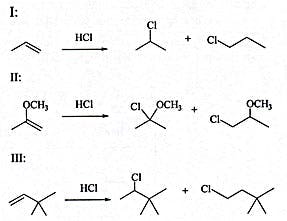MCAT® POP QUIZ
Put your biology, physics, and organic chemistry skills to the test with this short MCAT quiz featuring test-like practice questions.
MCAT Biology Sample Questions
Passage (Questions 1–2)
In an attempt to develop a vaccine for pneumonia, Fred Griffith performed a series of experiments in 1928 using mice and two strains of the pneumococcus bacteria: a virulent encapsulated strain and a nonvirulent unencapsulated strain. The encapsulated strain was called the "smooth strain" because the colonies looked smooth on a culture plate due to their polysaccharide capsules, whereas the unencapsulated strain was denoted as the "rough strain" due to the irregularity of its surface.
Four different groups of mice were injected with different combinations of the bacterial strains. The experimental results are shown in Table 1.
Table 1: Results of Griffith's experiment
Mice | Injected Bacteria | Result |
|---|---|---|
1 | Live smooth | Died |
2 | Live rough | Survived |
3 | Heat-killed smooth | Survived |
4 | Heat-killed smooth + live rough | Died |
Autopsies performed on Group 4 mice revealed blood samples filled with live smooth-strain bacteria. Some component had been transferred from the heat-killed smooth-strain bacteria to the live rough-strain bacteria, transforming them into the virulent smooth-strain bacteria. This process later became known as transformation. Griffith believed the protein from the dead smooth-strain bacteria was the active transforming agent.
1) A colony of smooth strain bacteria is grown on a culture containing an experimental drug that cleaves nucleic acid base sequences wherever adenine is paired with uracil. Which of the following processes will be directly affected?
I. Transcription
II. Translation
III. Transformation
- A. I only
- B. I and II only
- C. I and III only
- D. I, II and III
2) If Griffith had injected a fifth group of mice with a combination of heat-killed rough strain and heat-killed smooth strain, would the mice have died?
- A. No, because the heat-killed rough strain cannot infect mice.
- B. No, because the heat-killed smooth strain cannot transform mice cells.
- C. Yes, because the heat-killed rough strain is transformed into the smooth strain.
- D. Yes, because the mice do not have acquired immunity to pneumococcus bacteria.
MCAT Physics Sample Question
3) In which of the following cases will the normal force on a box be the greatest?
- A. When the box is placed in a stationary elevator
- B. When the box is placed in an elevator moving upwards at constant velocity
- C. When the box is placed in an elevator accelerating downward
- D. When the box is placed in an elevator accelerating upward
MCAT Organic Chemistry Sample Question
4) Which of the following addition reactions occurs the fastest?

- A. I, because a primary cation is formed in the rate-determining step
- B. II, because the cation formed in the rate-determining step is stabilized through an inductive effect
- C. III, because a secondary cation which is resonance-stabilized is formed in the rate-determining step
- D. II, because a secondary cation which is resonance-stabilized is formed in the rate-determining step
READY TO START PREPARING FOR THE MCAT?
Take an MCAT class led by a teacher—online or in person. Or pace your own prep. No matter what stage of test prep you’re in, we can help raise your score.
The best guarantee is one you won’t need. But you get it anyway.
